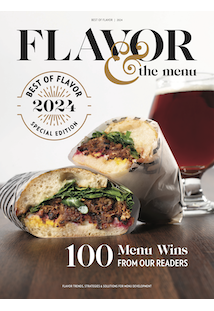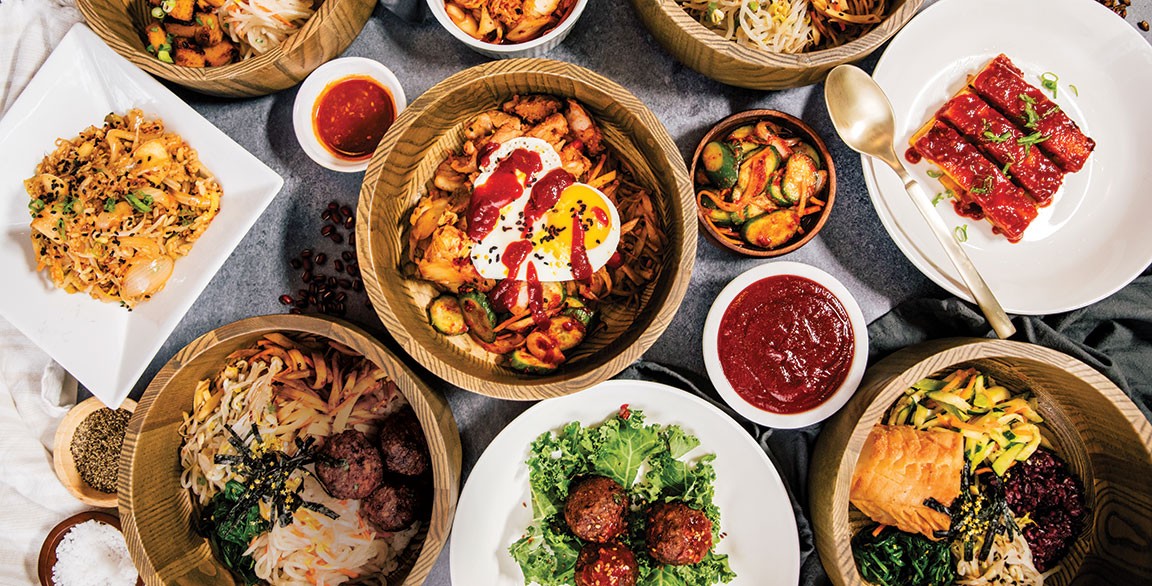

Although both models, ghost and virtual, were on the rise pre-pandemic as the logical next step in the expanding food delivery space, COVID changed their trajectory drastically. They jumped from niche operations to vital revenue streams. Restaurant brands moved from dipping their toes and testing the waters, to diving right into the deep end. Once on-premise dining faced pandemic-born limitations, the boundless possibilities of the virtual world offered considerably more reward than risk.
One of the quickest and surest pathways to this digital channel is through leveraging existing kitchen space and launching virtual kitchens, a direction taken by a growing number of restaurant brands today. “This is becoming a part of the fabric of our restaurants and I don’t see it going away,” says Efrem Cutler, VP of R&D and culinary director of Bloomin’ Brands International, based in Tampa, Fla. “Why would we not continue down this path? It’s a new revenue stream. If the juice is worth the squeeze….”
This is becoming part of the fabric of our restaurants and I don’t see it going away. Why would we not continue down this path? It’s a new revenue stream. If the juice is worth the squeeze….
Efrem Cutler, VP of R&D and Culinary Director, Bloomin’ Brands International
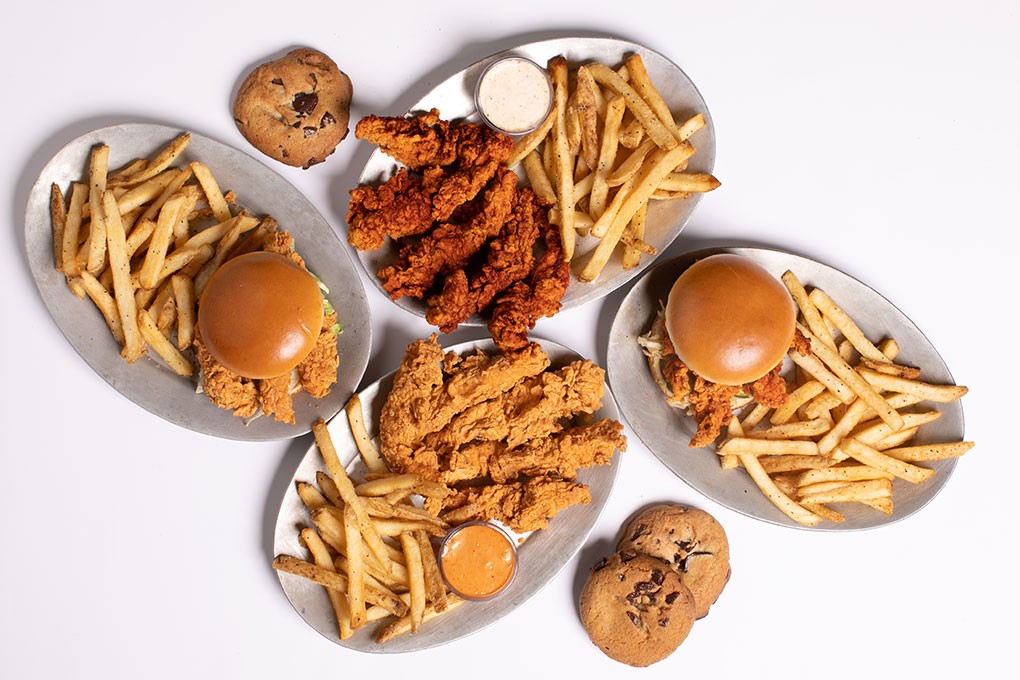 Tender Shack
Tender Shack Tender Shack, a new delivery-only concept from Bloomin’ Brands, serves up a variety of bold-flavored options, including its Nashville Hot AF and Dang Good Seasoned Tenders. The menu, which includes fries and cookies, is offered to consumers through an exclusive partnership with DoorDash.
Bloomin’ has launched Tender Shack, a virtual kitchen operating out of two of its casual dining brands, Outback Steakhouse and Carrabba’s Italian Grill. Serving up chicken tenders, fries and cookies exclusively through DoorDash, it rolled out nationally in January and now delivers from over 725 locations, with plans for further expansion, touting great success.
Cutler describes the company’s approach in broad strokes, capturing the spirit of innovation that’s energizing this category. “We chose tenders because they’re simple to produce and we could do them really well—hand-breaded, authentic, with bold flavors in our housemade sauces. We knew that we could produce that vision with a Tender Shack brand,” says Cutler.
“Also, we knew that we could be fluid because it’s easier when everything is digital—you don’t have the investment of printed menus; it’s just the press of a button to change something. At the same time, we’re being super disciplined about cross-utilizing our ingredients, and we’re making sure everything is very thoughtfully planned out,” he continues. “We only brought in three new SKUs for Tender Shack: a breader, a brioche bun and a proprietary Outback seasoning. Complexity is the enemy of improvement.”
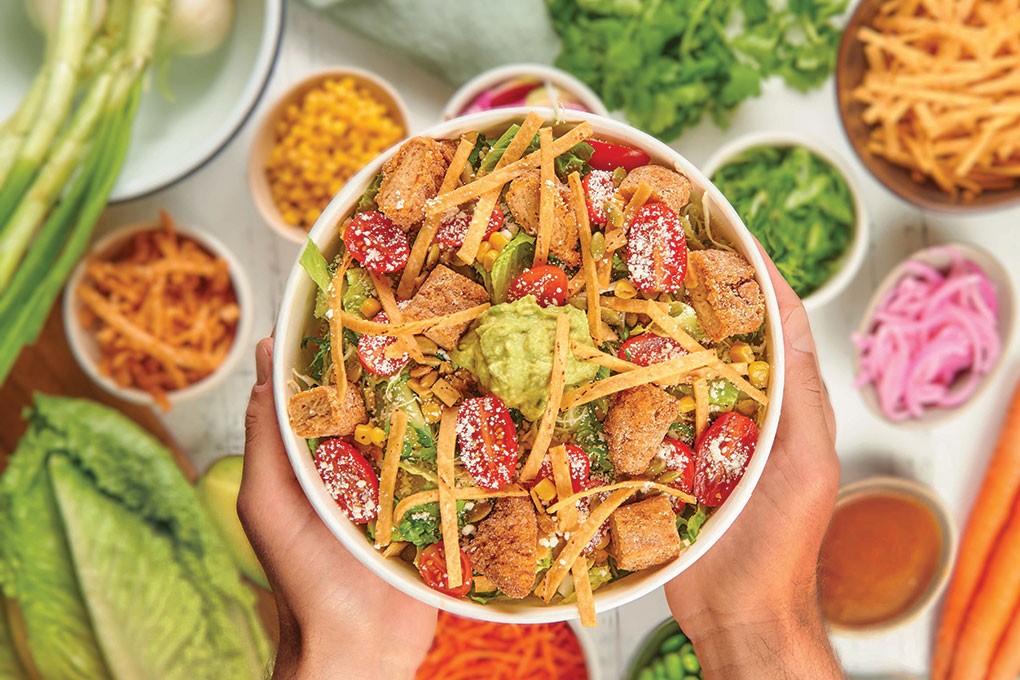 Starbird
Starbird With the new virtual plant-based concept Garden Bird, Starbird is hoping to attract vegans and vegetarians, as well as drive frequency for each of these brands, appealing to guests who might feel comfortable eating at Starbird once a week and Garden Bird once a week. Increasing engagement for an entire suite of brands is one of the opportunities with virtual kitchens.
Consumer Alert
Over the last few years, foodservice brands have sharpened their focus on delivery because they know it appeals to younger consumers. Technology, convenience and limited human interaction all draw Gen Z and younger Millennials to third-party apps, restaurant-to-consumer delivery and takeout.
With COVID, the overall number of users and frequency of online orders are up substantially. According to Second Measure, a data analysis firm, sales for meal delivery services grew 138 percent between December 2019 and December 2020. Even more telling, the pandemic has driven many restaurant patrons to the delivery model. Second Measure reports that in the fourth quarter of 2020, 35 percent of U.S. consumers had placed their first orders from one of the third-party delivery services, up from 28 percent a year ago.
Consumers who are embracing off-premise dining are fueling the growth of virtual brands. The pandemic prompted the delivery market to expand, while brick and mortar dining has contracted. Although the latter is surely temporary, the extended period of on-premise dining limitations has carried on long enough for consumers to absorb the culture of this digital channel. They’ve either learned a new behavior—ordering from a third-party delivery service—or adapted to a new routine that involves takeout and delivery as regular aspects of family and work life. Whichever version describes a restaurant brand’s customer, it’s clear that vying for their to-go dollars means big business.
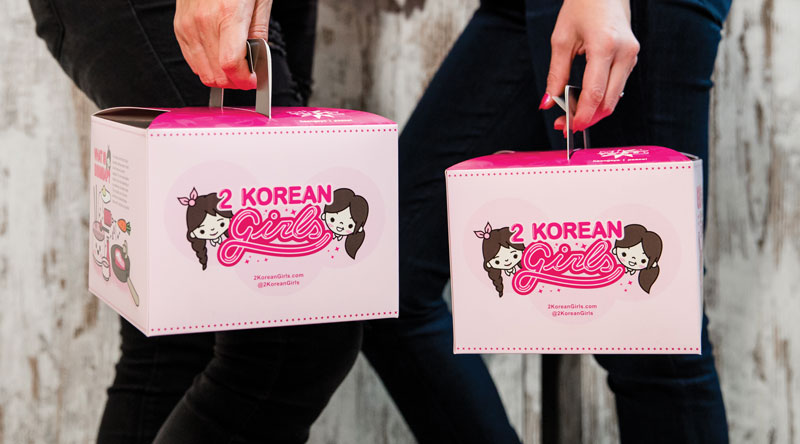 Amanda Julca
Amanda Julca Distinct branding helps 2 Korean Girls keep its virtual concept top of mind, promoting its “pink boxes of joy” on social media.
In the Game
Familiar restaurant brands are carving out pieces of the pixelated pie, launching virtual kitchens that align well with their core competencies. Brinker International, based in Dallas, rolled out It’s Just Wings last June, operating out of both Chili’s and Maggiano’s, with items like Pecan Wood-Smoked Bone-In Wings featuring a ranch rub or mango-habanero sauce.
Lazy Dog Restaurants, based in Costa Mesa, Calif., also got in the wings ring with its virtual restaurant Jolene’s Wings & Beer, offering diners trend-forward renditions like Kung Pao Bone-In Wings, which are sweet and savory with a hint of soy, tossed with crushed peanuts and topped with sesame seeds.
Dog Haus, a gourmet hot dog, sausage and burger concept based in Pasadena, Calif., has gone all-in on virtual restaurants, opening a number of them in partnership with ghost kitchens, including Kitchen United and CloudKitchens. The company has also formed Absolute Brands, a new restaurant group that will house a total of eight virtual brands. Three are in market now: the fried chicken-themed Bad Mutha Clucka, the plant-based concept Plant B and the breakfast-focused Bad-Ass Breakfast Burritos.
Starbird is a super-premium fast food chicken concept in Northern California, developed by The Culinary Edge, a San Francisco-based consultancy. Known for its studied and successful market approach, it’s employing a branded house strategy in the digital space. Starbird operates six brick-and-mortar restaurants and two ghost kitchens that execute its core menu. From those ghost kitchens, it also runs four virtual restaurants: Starbird Wings, Starbird Bowls, Starbird Salads and the brand-new Garden Bird, with a menu similar to its core version, but wholly plant-based.
“We’re investing in this for the future, not as a Band-Aid. Our strategy is to make sure that it’s a complete brand for the long term,” says Casey Hilder, Starbird marketing manager. “Virtual brands are part of our growth strategy as we move into different markets.”
We’re investing in this for the future, not as a Band-Aid. Our strategy is to make sure that it’s a complete brand for the long term. Virtual brands are part of our growth strategy as we move into different markets.
Casey Hilder, Marketing Manager, Starbird
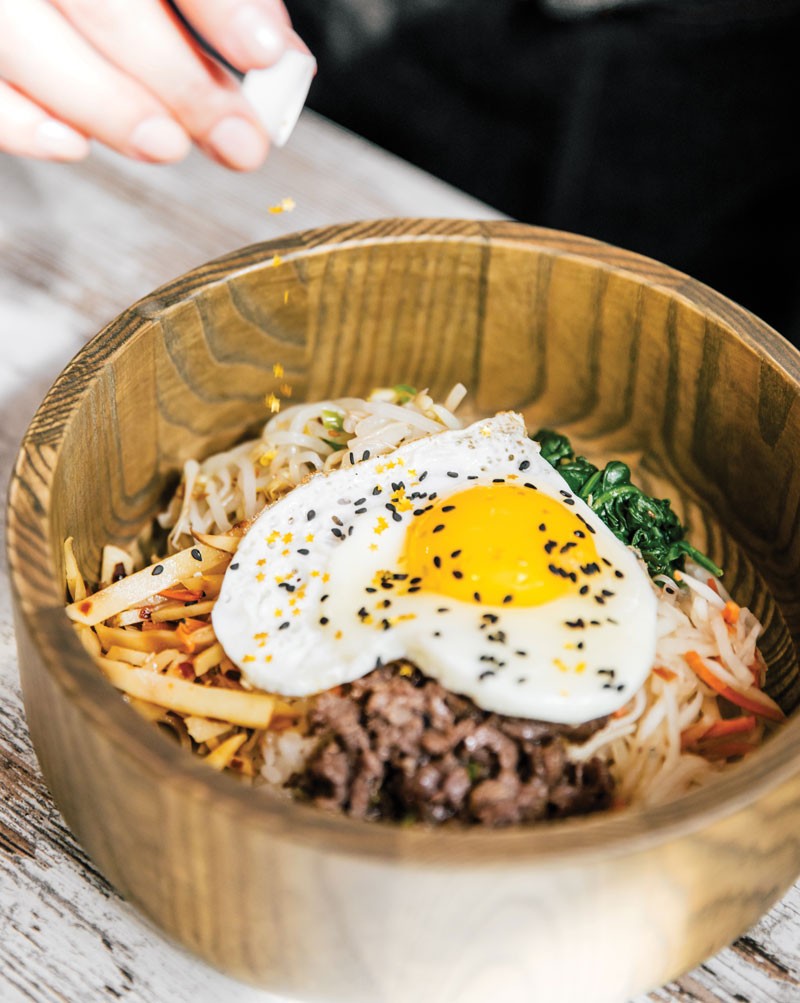 Amanda Julca
Amanda Julca At Miami’s 2 Korean Girls, Oh You Spicy Huh? features spicy Korean chicken served with white rice, cucumber kimchi, napa cabbage, spicy potatoes and gochujang. A memorable heart-shaped fried egg tops the dish, which is finished with “stars of happiness” (vegan sprinkles).
Problem Solving
For each concept, Starbird starts in the kitchen. “How do we build a menu without adding complexity or dethroning the current system of operations? Starbird Wings was the easiest one to map out—we’re a chicken restaurant, so that’s the first one we launched,” Hilder says.
“Plus, there really weren’t enough places selling wings in the Bay Area, leaving a surprising marketplace gap,” says Montina Filice, senior strategist with The Culinary Edge. Starbird Wings followed a golden rule that successful direct-to-consumer brands abide by: It solved a specific problem in the marketplace. There were not enough chicken wings in the geographic area to support home delivery. When virtual kitchens find a market gap like this, not only can they fill a void, their digital presence benefits from a less-crowded competitive field—both in online search and on ordering platforms.
We don’t look at our concept as fast casual; we look at ourselves as an e-commerce business.
Jennifer Kaminski, Co-Founder, 2 Korean Girls
Sisters Jennifer and Michele Kaminski wanted to address the dearth of Korean cuisine in the Miami market and planned on opening a storefront for their new concept, 2 Korean Girls, in 2018. “But thinking it through, it seemed hugely risky because there’s no Korean food in Miami—and maybe that’s not a market gap, but that there’s just no market for this cuisine at all,” says co-founder Jennifer Kaminski. “Delivery- and pickup-only was a great way for us to test the concept.”
It was an approach to see if what had worked for decades for their mother, a cook in Indiana with a flourishing line of Korean sauces and seasonings, could work in south Florida and then be scaled and expanded to other markets. Their mother, Chom “Sunny” Kaminski, collaborated on the fast-casual menu, while Allen Susser, South Florida’s native son and star chef, also helped launch the brand at the end of 2020.
Not only have the Kaminski sisters successfully filled a market void with 2 Korean Girls, they understand the importance of building an emotional connection between their virtual brand and their customer base. Conveying hospitality through the delivery experience is always a sticking point. Now remove any nostalgic memories or sensorial context formed within the four walls of a restaurant that tend to buoy an off-premise brand experience. Virtual kitchens that are not tethered to that familiarity have to work extra hard to pull consumers into a loyal embrace. They have to cultivate digital hospitality.
Jennifer and Michele Kaminski approached both the menu and the marketing from the perspective of a digitally native brand, problem solving the issue of connectivity through social media and other modern engagement tactics. “We don’t look at our concept as fast casual; we look at ourselves as an e-commerce business,” says Jennifer Kaminski. “We had to stand out, and we absolutely had to use social media strategically—how we talk about the menu, how we infuse that cuteness overload from Korea that people know and love,” says Michele Kaminski. “We do a lot with surprise and delight.”
They teach Korean phrases on social media and explain authentic dishes and flavors in an engaging, approachable way. They package items in “pink boxes of joy” and add personal notes to delivery orders. Their signature bibimbap is crowned with a heart-shaped fried egg, and a few dishes are sprinkled with “stars of happiness,” edible baking and pastry stars that keep things fun while lending a clear brand personality to a takeout container.
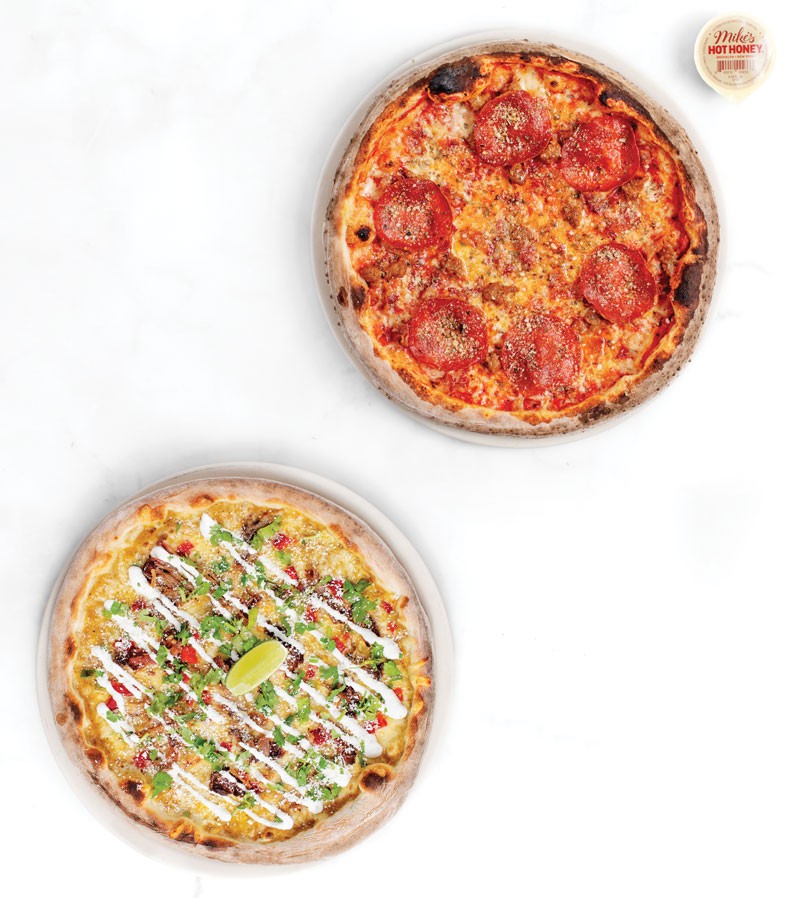 Honest Pizza
Honest Pizza Modern Restaurant Concepts is stretching its pizza wings with its virtual kitchen Honest Pizza, running more indulgent builds than what would typically go onto a Modern Market menu. Along the way, it’s picking up valuable insights for its core brand. The meat-centric When Pigs Fly (right), with red sauce, uncured pepperoni, Italian sausage, nitrate-free bacon and Mike’s Hot Honey, is its top seller. With a commitment to keeping new SKUs to a minimum, innovating within the four walls has become a mantra. The flavorful New Mexico pie (below), serves as evidence that it’s possible, starring green chile sauce, mozzarella, pulled pork, roasted red pepper, Cotija and lime.
Niche Opportunities
Nate Weir, VP of culinary for Colorado-based Modern Restaurant Concepts, which includes Modern Market and Lemonade, saw a surprisingly underrepresented sub-category on DoorDash: artisan pizza. In response, the company took the opportunity to launch a virtual pizza concept.
Following another proven principle laid out by direct-to-consumer strategists, he and the team developed a niche focus that would allow customers to search the internet and easily find their product. “Last December, we launched Honest Pizza, offered through delivery partners only, and it’s cranking,” says Weir.
For the virtual concept, you have to create items that are going to deliver with flavor, but can also be delivered with consistent execution. That’s why we tried to work largely with known ingredients and not stray too far from existing processes.
Nate Weir, VP of Culinary, Modern Restaurant Concepts
“We put pizza right in the name because SEO [search engine optimization] is so important in the digital space. Modern Market offers pizza on its menu, but in the delivery space, it wasn’t getting traction. “We realized that the SEO element was missing. The big brands get recognition on DoorDash and other third-party delivery sites, but artisan, neighborhood pizza doesn’t come up in search when buried in a larger menu—unless it’s a brand of its own,” says Weir.
Honest Pizza is now operating out of four Modern Market restaurants in Colorado, strategically positioned to serve varying demographics: college kids, businesses in downtown areas and families in the suburbs. “We’re testing it in different markets to see how it does and who it appeals to most,” he says.
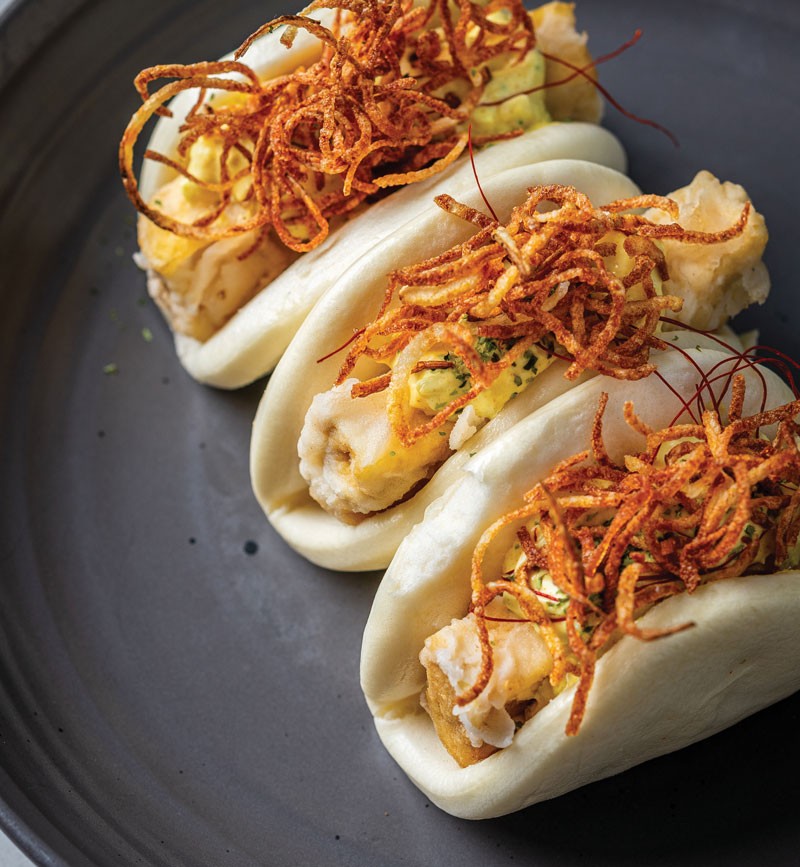 Under A Bushel Photography
Under A Bushel Photography Ghostline is an intriguing new chef collective in Washington, D.C., housing seven concepts with a takeout and delivery focus, along with an expansive patio for outdoor dining. The food hall-style approach provides a platform that is ripe for culinary exploration. One of the rotating concepts, Ramen by Uzu, offers Japanese comfort food, like these steamed buns filled with fried chicken or tofu, Japanese curry-tartar sauce, sweet-and-sour soy sauce, fried potato shavings and cilantro.
Flavor Innovation Kitchens
Virtual kitchens act as proving grounds for flavor play, giving core brands an elasticity of infrastructure that is wired into a lightning-fast digital platform. They can test menu items and flavor combinations while monitoring demographics, ordering behavior and more.
“Honest Pizza is exciting culinarily because we can move outside of our Modern Market concept,” says Weir. “We can do a Supreme Pizza because the ethos is pops of indulgence but with honest flavors.” When Pigs Fly is a bestseller for the virtual brand—it’s loaded with smoked pulled pork, Italian sausage crumbles, bacon bits and hot honey. “It’s kind of fun, and we get to push the envelope on price points,” he continues. “We’re driving sales for Honest Pizza and serving as a test bed for Modern for both flavor and price.”
He’s also testing build-your-own pies at Honest Pizza, something not on offer at Modern Market. “We call it ‘The Perfect Pie.’ With customers adding toppings, it becomes a higher-priced pizza—it’s a really interesting test case. We can turn on a build-your-own in Modern Market. We didn’t do it before because our concept is about curating the experience. There’s also the complexity factor. But by doing it online-only, we could work out the kinks. The virtual kitchen creates an impetus to rethink and improve.”
Starbird created its virtual brand Starbird Salads in 2020 largely because the category on its core menu had skyrocketed. “We hadn’t marketed it a ton. It seemed to take off for no particular reason,” says Hilder. Salads were accounting for 35 percent of sales, so the team decided to build a virtual brand highlighting that category.
“We’re able to test different salads through the virtual platform before bringing them to our core menu at Starbird,” says The Culinary Edge’s Filice. “Starbird Salads was born out of consumer demand. We think it’s a high-selling category because consumers can strike a balance. ‘I can eat craveable crispy chicken that I want to eat and not feel bad about it.’ We can play around with the salads and experiment without making our core menu bigger and bigger while we do that.”
We had to stand out, and we absolutely had to use social media strategically—how we talk about the menu, how we infuse that cuteness overload from Korea that people know and love.
Michele Kaminski, Co-Founder, 2 Korean Girls
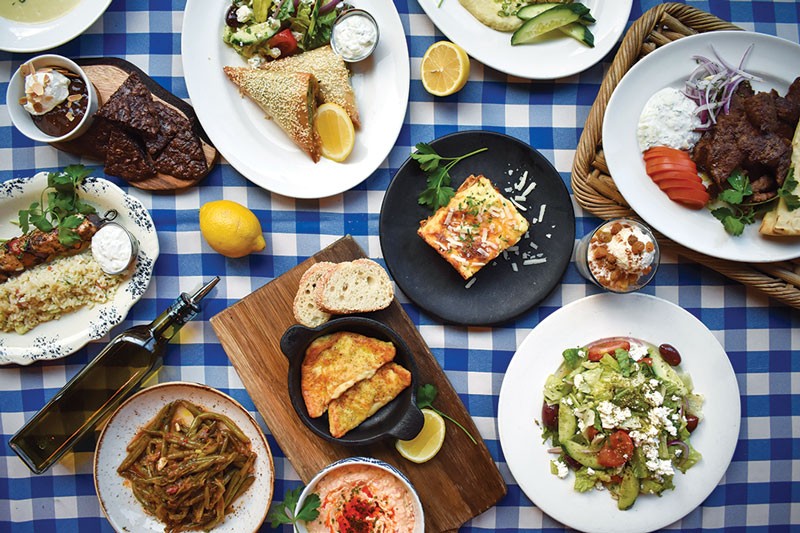 Samantha Brauer
Samantha Brauer Lettuce Entertain You Enterprises (LEYE) restaurant group, based in Chicago, has recently resurrected a few of their ’90s-era concepts in the form of pop-up virtual kitchens. The nostalgic reboots have included French favorite Brasserie Jo, which offered carryout orders for two or four, with signature items like coq au vin and chocolate mousse. Papagus Greek Taverna led by original chef/partner John Chiakulas, featured Greek favorites, including spanakopita and pastitsio, and was available for both carryout and delivery. LEYE’s use of virtual kitchens as a promotional vehicle for legacy full-serve concepts is a savvy one.
Flavor Strategies
First impressions are always important in foodservice, but in the virtual world, flavor carries the responsibility almost entirely on its own. “If the first thing they order isn’t delicious, you’re unlikely to get a second chance,” says Modern Restaurant Concept’s Weir. “It’s also their only engagement with you; if a dine-in guest doesn’t love the first thing they order, but the experience and hospitality are great, they might give you the benefit of the doubt. For the virtual concept, you have to create items that are going to deliver with flavor, but can also be delivered with consistent execution. That’s why we try to work largely with known ingredients and not stray too far from existing processes. We’ve really worked hard at innovating within our four walls.”
Honest Pizza’s menu runs 10 pie varieties, three salads and one appetizer. “We were able to bring in only five new SKUs, including packaging. We did clever things to make that happen,” says Weir. For example, the New Mexico pie is a unique pizza with green chile, mozzarella, fresh jalapeño, pulled pork, roasted red pepper, cilantro, Cotija and lime. For the base of the signature sauce, he purées the green chile soup already in Modern Market’s pantry.
Loaded mac and cheese is Instagrammable, popular and memorable, and it’s the ultimate comfort food. I don’t think a desire for that is going away any time soon.
Tamra Scroggins, Director of Culinary, Grill Concepts
Grill Concepts, a Los Angeles-based restaurant group, operates the family-friendly Daily Grill, modern steakhouse Grill on the Alley and gastropub Public School on Tap. It ramped up its move into virtual kitchens after the pandemic struck, looking for added revenue streams that utilized existing labor and SKUs.
L.A. Bowls and Breads (formerly called O.C. Breads & Bowls) was first out of the gate and is now working out of nine locations in the Grill Concepts universe. Burger Academy operates out of 10. Two more are in development with concept names not finalized, but with working titles: “Mac & Melt” and “Eggs & Marys.” “The reason we keep growing our virtual brands is because we’ve been really successful at it,” says Tamra Scroggins, Grill Concepts’ director of culinary. “We formulated the recipes to only utilize SKUs already in house. If we have to buy any more, like pepper Jack cheese, then we make sure to add them to one of our core menus—like Public School’s list of cheese options for its burger menu.”
Her culinary approach is both pragmatic and creative, leveling up flavor play while thinking through the effects of hold and travel times on the eating experience. For example, each of the seven melted/toasted sandwiches at the new virtual kitchen, launching in April, features an ingenious and enticing outer crust. “Adding that layer helps hold the heat and builds in crispy texture, which is an expectation when you order a toasted sandwich,” says Scroggins. All sandwiches are served on sourdough and are brushed on the outside with mayonnaise and butter.
Beyond that, the build determines the crust. The Jalapeño Popper Melt, for example, gets a crackly shell of Tillamook white cheddar cheese, while the inside sees beer-battered bacon, a schmear of jalapeño cream cheese, pepper Jack cheese and fresh jalapeño slices. Blackberry-habanero jelly is served on the side.
Meanwhile, the Mac and Cheese Melt taps into the salt-and-vinegar flavor trend, combining crushed potato chips with Parmesan and griddling it onto the outside of the sandwich, over the rich layer of butter and mayonnaise.
Grill Concepts also chose narrow themes for its virtual kitchens. The Mac & Melt’s comfort-centric focus is intentional, as is the singular spotlight on mac and cheese versus the broader pasta category. “Loaded mac and cheese is Instagrammable, popular and memorable, and it’s the ultimate comfort food. I don’t think a desire for that is going away anytime soon,” says Scroggins. “We thought about going broader with a pasta concept, but our strategy is to stand out and be unique in the digital marketplace. If someone wants to order pasta online, they’ll probably order from an Olive Garden or Maggiano’s. But if we can carve out a niche for a specific item and be an expert in that, I think that’s where we can compete.”
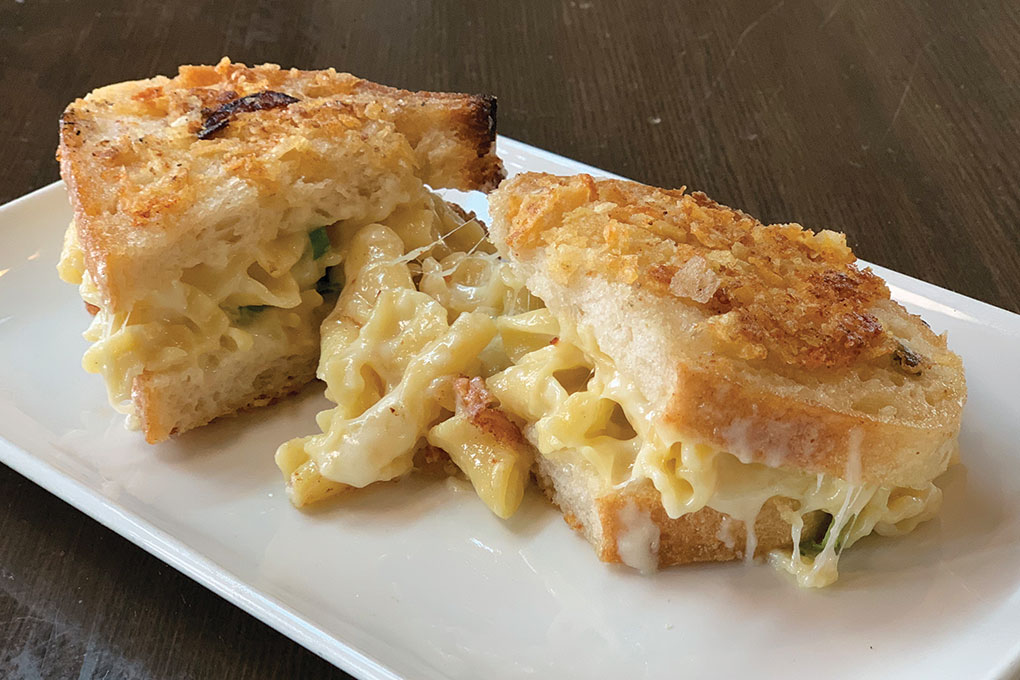 Grill Concepts
Grill Concepts All of the toasted sandwiches at the forthcoming virtual kitchen from Los Angeles-based Grill Concepts feature a crispy outer crust, designed to add extra texture and maintain heat. This Mac and Cheese Melt sports a layer of salt-and-vinegar potato chips, crumbled into Parmesan and griddled onto the butter/mayo-brushed sourdough bread.
SKU U
Maximizing SKUs and minimizing complexity is the mantra of most menu developers today. Keeping those two values top priority while adding an entirely new menu to an existing pantry is a formidable challenge. Cutler from Bloomin’ Brands introduced three new SKUs for Tender Shack: a breader, a brioche bun and proprietary Outback seasoning. Weir added three branded packaging SKUs and only two ingredients to his procurement order for Honest Pizza—sausage and roasted red pepper. Starbird’s Hilder estimates bringing in three to five SKUs for each new virtual concept, stressing the importance of “minimal additions to the brand with minimal operational complexity.”
The Culinary Edge’s Filice agrees with reining in pantry items, but she cautions against playing it too safe. Remember the importance of high-impact flavor in a virtual brand experience. “Make sure you’re introducing the right ingredients to bring that dish to life. If it makes the menu item a compelling offering, lead with that. Then find another place to use it,” she says. “We brought in new sauces for Starbird Bowls. As we start LTO [limited-time offering] planning for the Starbird core brand, we ask ourselves, ‘What did we bring in for Bowls that could inspire us and that we could maybe explore in a taco or salad, cross-utilizing it?’ If you’re trying so hard not to have a single-use SKU, you might be missing the opportunity for a really wonderful product.”
If you’re trying so hard not to have a single-use SKU, you might be missing the opportunity for a really wonderful product.
Montina Filice, Senior Strategist, The Culinary Edge
Delivery has a long-established footing in consumers’ lives, one that became more entrenched over the last year. Now, we have to consider what happens when consumers emerge from pandemic living and adopt some version of normalcy that involves leaving their bubble. Will virtual kitchens recede, having served dutifully, but be deemed irrelevant going forward? Or are they now a firmly established restaurant channel for operators and another avenue for diner outreach and growth?
“One of the biggest trends that came out of the 2008 market crash was fast casual,” says Filice. “It had a big uptick, then it got oversaturated and only the strong survived—but as a category, fast casual still exists. It wouldn’t surprise me if virtual kitchens follow that same trajectory. In the long term, there’s a convenience aspect and an accessibility that is being built upon with all of these virtual kitchens. And there’s a maximization of profits for restaurants. It will probably hit a peak and come back down a bit.”
A long runway for innovation and growth spells continued opportunity for restaurant brands. “The digital real estate investment is always going to be there because more people are going to be ordering,” says Hilder. “Starbird—and other brands—are there until the world changes again. We’ll react and make a pivot from there.”

